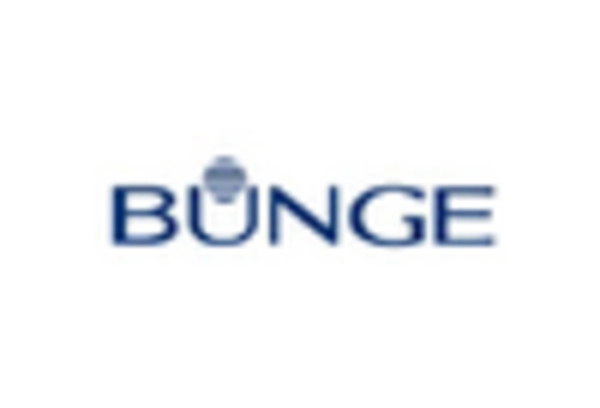Health and Wellness Trends
The growing focus on health and wellness is significantly impacting the Edible Oil Packaging Market. As consumers become more health-conscious, there is an increasing demand for oils that are perceived as healthier options, such as olive oil and avocado oil. This trend is prompting manufacturers to highlight nutritional information and health benefits prominently on packaging. Furthermore, packaging that emphasizes organic and non-GMO certifications is gaining popularity, as consumers seek transparency regarding product ingredients. This shift towards health-oriented products is likely to drive innovation in packaging design, as companies strive to meet consumer expectations while ensuring that their products stand out in a competitive market. The Edible Oil Packaging Market is thus evolving to align with these health and wellness trends.
Sustainable Packaging Solutions
The Edible Oil Packaging Market is increasingly influenced by the demand for sustainable packaging solutions. Consumers are becoming more environmentally conscious, prompting manufacturers to adopt eco-friendly materials. Biodegradable and recyclable packaging options are gaining traction, as they align with the growing trend of sustainability. In fact, a significant portion of consumers now prefers products that utilize sustainable packaging, which has led to a shift in production practices. Companies are investing in research and development to create packaging that minimizes environmental impact while maintaining product integrity. This trend not only enhances brand image but also meets regulatory requirements aimed at reducing plastic waste. As a result, the Edible Oil Packaging Market is likely to see a rise in the adoption of innovative materials that cater to eco-conscious consumers.
E-commerce Driven Packaging Design
The rise of e-commerce has transformed the Edible Oil Packaging Market, necessitating packaging designs that cater to online retail. With more consumers purchasing edible oils online, packaging must ensure product safety during transit while also being visually appealing. This shift has led to the development of robust packaging solutions that can withstand shipping conditions, reducing the risk of damage. Additionally, packaging that is easy to open and reseal is becoming increasingly important for consumer convenience. As e-commerce continues to expand, the Edible Oil Packaging Market is likely to adapt by creating innovative packaging designs that enhance the online shopping experience, ultimately driving sales and customer satisfaction.
Technological Innovations in Packaging
Technological advancements are playing a pivotal role in shaping the Edible Oil Packaging Market. Innovations such as smart packaging, which incorporates sensors and indicators, are enhancing product safety and shelf life. These technologies allow for real-time monitoring of oil quality, ensuring that consumers receive fresh products. Moreover, automation in packaging processes is streamlining production, reducing costs, and increasing efficiency. The integration of digital printing technologies is also enabling customized packaging solutions, appealing to diverse consumer preferences. As the industry embraces these technological innovations, it is expected that the Edible Oil Packaging Market will experience significant growth, driven by enhanced product offerings and improved operational efficiencies.
Regulatory Compliance and Safety Standards
Regulatory compliance and safety standards are critical drivers in the Edible Oil Packaging Market. Governments and regulatory bodies are implementing stringent guidelines to ensure food safety and quality, which directly influences packaging requirements. Manufacturers must adhere to these regulations, which often dictate the materials used and the labeling information provided. Compliance not only ensures consumer safety but also enhances brand credibility. As regulations evolve, companies in the Edible Oil Packaging Market are compelled to invest in packaging solutions that meet these standards while also appealing to consumer preferences. This focus on compliance is likely to drive innovation and investment in safer, more effective packaging technologies.

















Leave a Comment